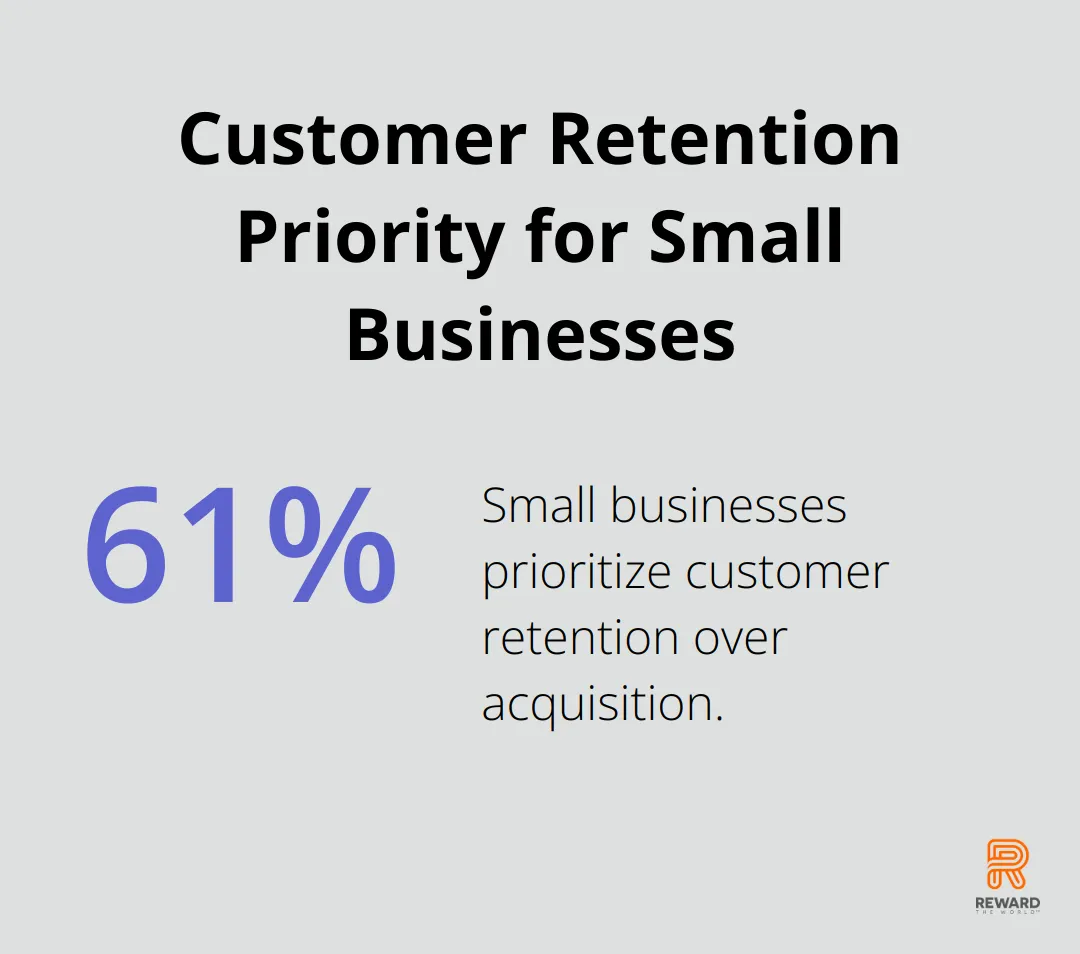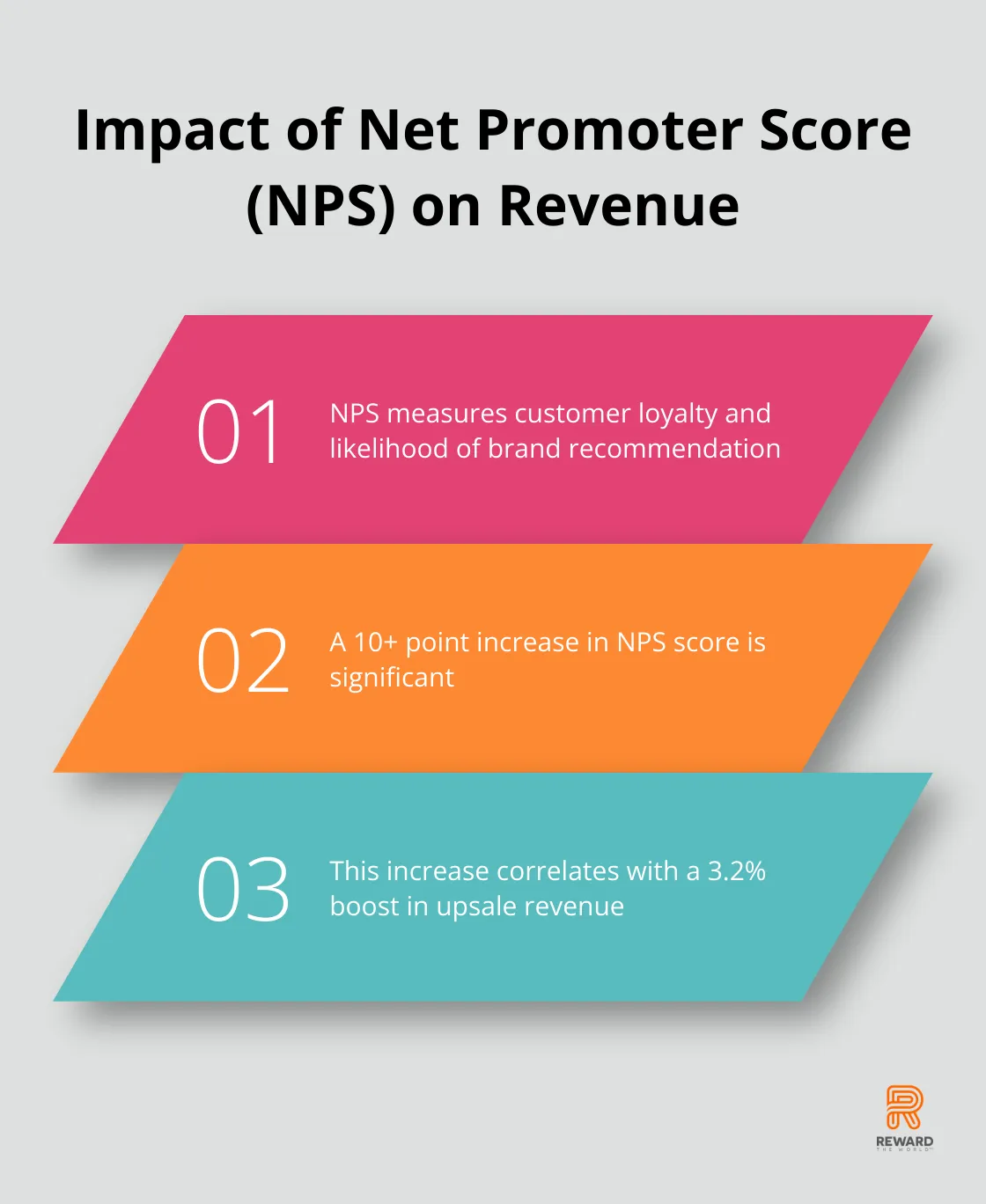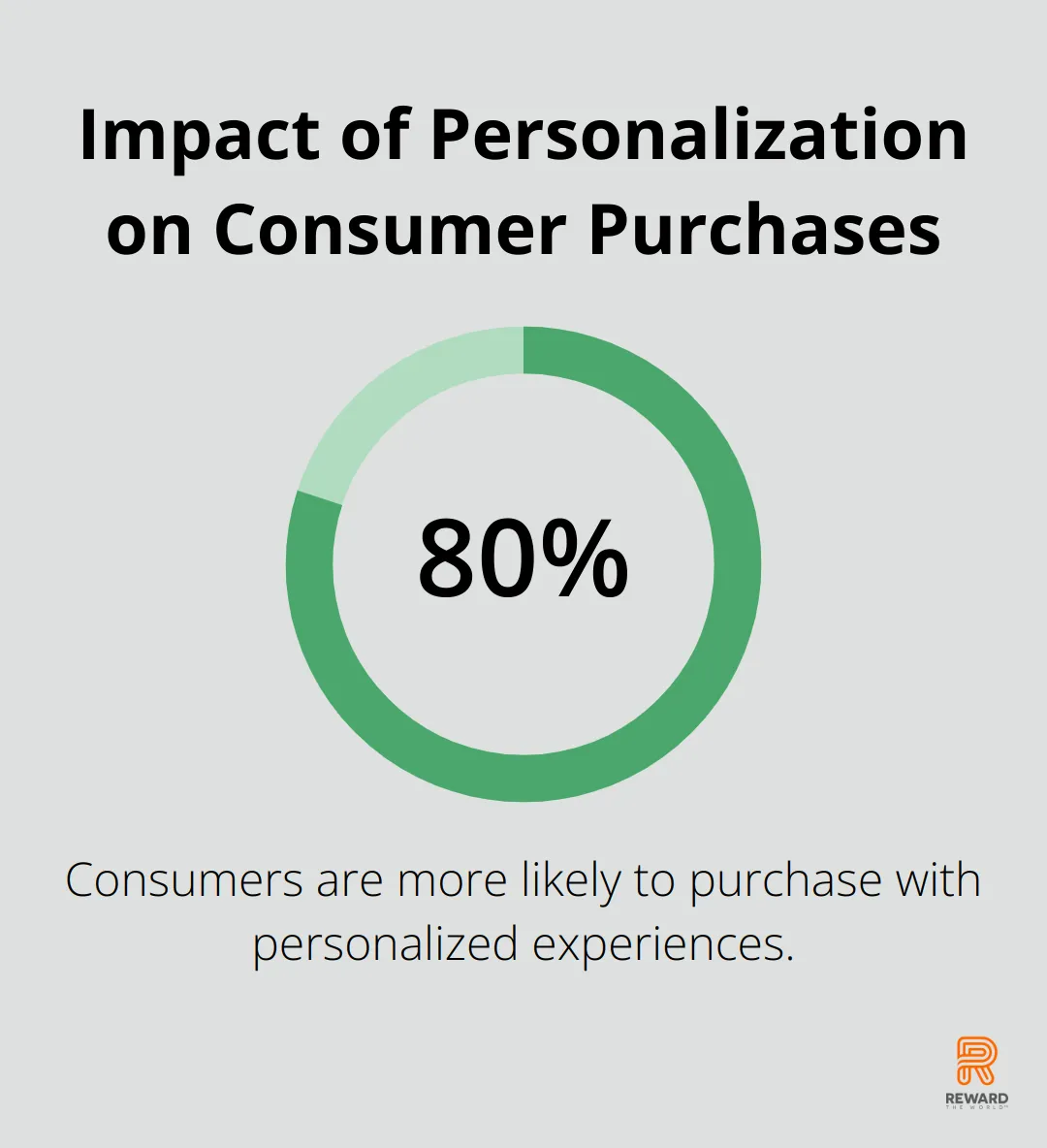
Loyalty programs generate vast amounts of data, but making sense of it all can be challenging. At Reward the World, we’ve seen firsthand how proper analysis of this information can transform customer relationships and boost business performance.
Data visualization tools are key to unlocking the full potential of loyalty analytics, turning complex datasets into actionable insights. This post will guide you through the essentials of loyalty analytics and show you how to leverage this powerful resource for your business.
What Are Loyalty Analytics?
The Foundation of Customer Retention
Loyalty analytics form the cornerstone of successful customer retention strategies. These analytics involve the collection, analysis, and interpretation of data from loyalty programs to extract insights into customer behavior, preferences, and engagement levels. At Reward the World, we understand the transformative power of these analytics in shaping business strategies and driving growth.
Key Metrics for Success
When exploring loyalty analytics, certain metrics prove particularly valuable:
- Customer Retention Rate (CRR): This critical indicator shows the percentage of customers who continue to engage with your brand over time. For 61% of small businesses, customer retention is more important than customer acquisition.
- Net Promoter Score (NPS): This metric measures customer loyalty and the likelihood of brand recommendation. Research has found that a 10+ increase in NPS score correlates with a 3.2% increase in upsale revenue.
- Repeat Purchase Rate (RPR): This important metric reveals how often customers return to make additional purchases.

The Distinction from Traditional Analytics
Loyalty analytics differ from general customer analytics in their focus on long-term engagement rather than one-time transactions. They provide a more nuanced view of customer behavior over time, allowing businesses to identify trends and patterns that may not appear in broader analytics.
For example, loyalty analytics can reveal which rewards or incentives most effectively drive repeat purchases. This level of detail enables businesses to tailor their offerings and communication strategies to maximize customer engagement and lifetime value.
Transforming Data into Action
The true power of loyalty analytics lies in their ability to generate actionable insights. Analysis of reward redemption rates allows businesses to fine-tune their offerings to better match customer preferences. Low redemption rates might indicate unappealing rewards or difficult-to-obtain incentives, signaling a need for program adjustments.
Furthermore, loyalty analytics help identify your most valuable customers. Customer segmentation based on engagement levels and purchase history allows for the creation of targeted marketing campaigns that resonate with specific groups, thus increasing the effectiveness of your loyalty program. Key steps in this process include gathering rich, actionable data, selecting meaningful segmentation criteria, crafting personalized rewards and communications, and continuously refining and adapting the approach.
As we move forward, let’s explore how to leverage this data for even more impactful insights and strategies.

Turning Loyalty Data into Customer Wins
Identifying High-Value Customers
Pinpointing your most valuable customers is essential for maximizing your loyalty program’s impact. These customers often account for a disproportionate amount of revenue.
To identify these customers, focus on metrics such as purchase frequency, average order value, and lifetime value. Customers who consistently engage with your loyalty program, redeem rewards often, and make repeat purchases likely represent your most valuable assets.
Once identified, create exclusive tiers or personalized rewards for these customers. This approach not only makes them feel valued but also encourages continued loyalty. You could offer early access to new products, higher point-earning rates, or exclusive events (tailored to their preferences).
Re-engaging At-Risk Customers
Identifying customers at risk of churning is equally important. Look for signs such as decreased purchase frequency, lower engagement with loyalty program communications, or unused points/rewards.
To re-engage these customers, send personalized offers based on their past purchases or interests. You might also implement a win-back campaign, offering a special discount or bonus points for their next purchase. Timing is key – act quickly once you’ve identified a customer as at-risk.
Personalizing Customer Experiences
Personalization stands as a cornerstone of effective loyalty programs. Epsilon reports that 80% of consumers are more likely to make a purchase when brands offer personalized experiences.
Use your loyalty data to understand individual customer preferences, purchase history, and behavior. This information allows you to tailor rewards, communications, and offers to each customer’s specific interests and needs.
For example, if a customer frequently purchases eco-friendly products, highlight your sustainable offerings or provide extra rewards for choosing green options. If another customer often shops during sales, send them early notifications about upcoming promotions.

Leveraging Analytics for Targeted Campaigns
Advanced analytics tools can help you segment your customer base and create highly targeted marketing campaigns. By analyzing purchase patterns, redemption rates, and engagement levels, you can develop strategies that resonate with specific customer groups.
For instance, you might create a campaign for customers who haven’t made a purchase in the last three months, offering them a personalized discount on items similar to their previous purchases. Or, you could design a special promotion for customers who frequently engage with your mobile app, encouraging them to try new features or products.
Continuous Improvement Through Feedback
Your loyalty program should evolve based on customer feedback and changing preferences. Regularly survey your members to understand what they value most about your program and what improvements they’d like to see.
Use this feedback to refine your offerings, adjust your reward structure, or introduce new features. This ongoing process of improvement demonstrates your commitment to customer satisfaction and helps maintain the relevance of your loyalty program in a competitive market.
As we explore these strategies for leveraging loyalty data, it’s clear that the key lies in understanding and responding to individual customer needs. But how do businesses overcome the challenges that come with implementing these data-driven approaches? Let’s examine some common hurdles and their solutions in the next section.
Navigating Loyalty Analytics Challenges
Data Quality and Integration Issues
Poor data quality can undermine even the most sophisticated analytics efforts. Inconsistent formatting, duplicate entries, and outdated information often plague loyalty programs. To combat this, companies must implement rigorous data cleansing processes. Automated tools can identify and correct errors, remove duplicates, and standardize data formats. Regular audits of data sources help identify and correct issues before they impact analysis.
Integrating data from multiple sources presents another challenge. Different systems often use varying formats or definitions for the same data points. To address this, companies should create a centralized data warehouse that minimizes information silos, improves data quality, and makes it easier to see and predict the potential impact of emerging trends or proposed changes.
Privacy Concerns vs. Data Utilization
With regulations like GDPR and CCPA in place, companies must balance data utilization with privacy concerns. Transparency is essential. Companies should clearly communicate to customers what data they collect and how they use it. The success of the loyalty program as a data flywheel depends on being transparent with customers in how data is collected and used. Offering opt-in choices for data collection beyond basic transaction information can build trust.
Anonymization techniques can protect individual privacy while still allowing for meaningful analysis. For instance, companies can aggregate data at a segment level rather than individual customer level for broader trend analysis.
Choosing the Right Analytics Tools
Selecting the right analytics tools can overwhelm companies given the plethora of options available. Companies should start by clearly defining their objectives. Do they need real-time analysis capabilities? Are predictive analytics a priority? Understanding these needs will help narrow down choices.
Scalability is another important factor. As loyalty programs grow, analytics needs evolve. Companies should choose a platform that can grow with them. Cloud-based solutions often offer more flexibility and scalability compared to on-premise options.
User-friendliness is a critical factor. The best analytics tool is one that teams can use effectively. Companies should look for platforms with intuitive interfaces and robust support resources.
Integration capabilities are vital. The chosen tool should easily connect with existing systems, from CRM to e-commerce platforms. This integration ensures a seamless flow of data and more comprehensive insights.
Continuous Improvement and Adaptation
The landscape of loyalty analytics constantly changes. Companies must regularly reassess their analytics strategy to ensure it meets evolving needs and delivers actionable insights. This reassessment should include evaluating new tools and technologies, updating data collection methods, and refining analysis techniques.
Companies should also invest in training their teams to effectively use analytics tools and interpret results. This investment ensures that the insights gained from loyalty analytics translate into meaningful actions that drive program success.
Final Thoughts
Loyalty analytics have become essential for businesses in today’s competitive landscape. Companies can gain deep insights into customer behavior, preferences, and engagement levels through data visualization and analysis. These insights enable the creation of more effective loyalty programs and marketing strategies that drive meaningful results.
Artificial intelligence and machine learning will play an increasingly significant role in predictive analytics for loyalty programs. The integration of data from multiple touchpoints will provide a more holistic view of the customer journey, enabling even more personalized experiences. Data visualization techniques will become more sophisticated, allowing businesses to uncover hidden patterns and trends in customer behavior.
Reward the World offers robust analytics capabilities to help businesses turn data into actionable insights. Our platform drives customer engagement and boosts performance through powerful loyalty analytics. Companies can leverage our turnkey solution to create more meaningful connections with their customers and achieve their business goals.
